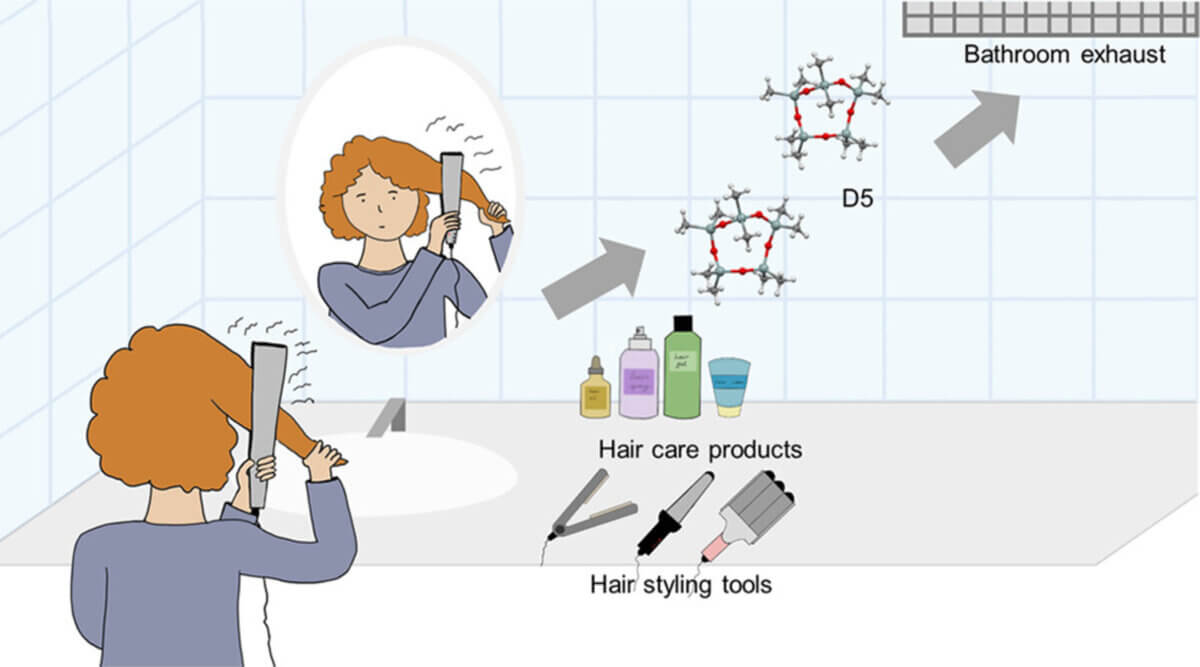WEST LAFAYETTE, Ind. — Everyday hair products could be damaging your health. These products, such as creams, sprays, and oils, often contain volatile organic compounds (VOCs), including siloxanes, which are responsible for giving hair its shine and smoothness. In a recent study, Purdue University scientists reveal that these VOCs can quickly alter indoor air composition, with heat styling techniques like straightening and curling exacerbating the issue.
While some previous studies have examined the release of siloxanes from personal care products, most of them focused on items that are washed off the body, such as skin cleansers. This new study is unique because it investigates the real-time changes in indoor air quality that occur when individuals actively style their hair. Researchers aimed to provide insights into VOC emissions from hair products in real-world settings, particularly in confined spaces like small bathrooms.
“We found the results to be extremely alarming,” says study corresponding author Nusrat Jung, an assistant professor in the Lyles School of Civil Engineering at Purdue University, in a university release. “We did not expect to see such significant emissions of volatile chemical mixtures from off-the-shelf hair care products during typical hair care routines that many people perform each and every day.”

To conduct their investigation, researchers set up a well-ventilated small house where participants used their usual hair products and heated styling tools. Throughout the process of hair styling, the team measured real-time emissions of VOCs, including cyclic volatile methyl siloxanes (cVMS), commonly found in many hair care products.
The results from mass spectrometry revealed rapid changes in the chemical composition of the indoor air, with cVMS being the predominant VOCs detected. Emission levels were found to be influenced by various factors, including the type of hair product used, hair length, and the type and temperature of the styling tool. Longer hair and higher temperatures resulted in higher levels of VOC emissions.
One of the key findings of the study was the estimation that an individual’s potential daily inhalation of one specific cVMS, known as D5, could reach as high as 20 milligrams per day. While the study showed that turning on an exhaust fan effectively removed most of the air pollutants within 20 minutes after a hair care routine, researchers caution that this practice could impact outdoor air quality in densely populated urban areas.
“Home ventilation is likely a major pathway of indoor-to-outdoor siloxane transport,” explains Jung. “In urban environments, this is especially significant as you will have hundreds — even thousands — of homes ventilating out potentially harmful chemicals into the urban atmosphere all in a short span of time as people get ready for work and school in the morning. These chemicals are then collectively piped back into buildings through ventilation systems once more. So even if using products with harmful chemicals is not part of your hair care routine, you will still be impacted due to your surroundings in an urban environment.”

The study’s authors emphasize the urgent need for further research to assess the long-term health impacts of siloxane exposure on humans, as most existing findings are derived from animal studies. Scientists say their research underscores the importance of considering the potential health risks associated with the use of hair care products and the need for proper ventilation when using such products in enclosed spaces.
“There’s a good reason why these chemicals are restricted from being used in wash-off hair care products in certain parts of the world,” notes Jung. “The effects on people and the planet need to be studied further and regulatory action needs to be taken.”
The study is published in the journal Environmental Science & Technology.
You might also be interested in:
- Best Anti-Humidity Hair Products: Top 5 Brands Most Recommended By Stylists
- Have old carpets? Pollutants of thirdhand smoke could still be in your home
- Air pollution to blame for alarming rise in heart attacks and strokes, study shows

